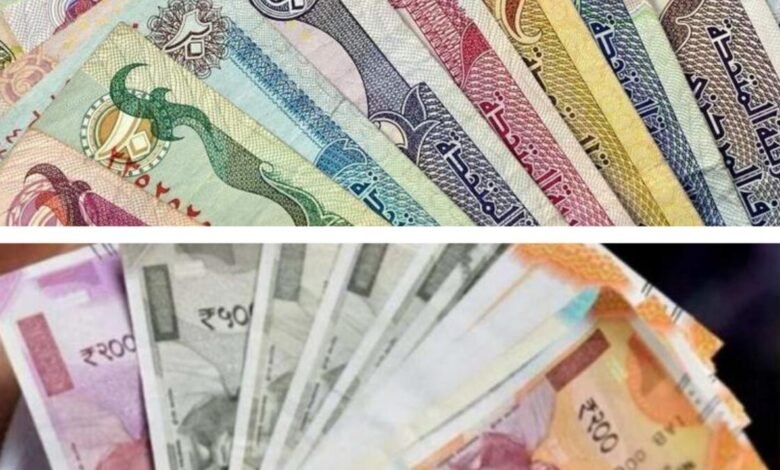Local currency settlement system for rupee-dirham deal – News

It was presumed to cover around 20-25 per cent of trade in local currency initially
Read more…
India and the UAE have very strong cultural and trade relationships. India was the first country with which the UAE signed a Comprehensive Economic Partnership Agreement (Cepa), evidencing the importance of India-UAE trade. In July 2023, India and the UAE formalised an agreement to settle transactions in their respective currencies — the rupee and the dirham.
This direct trade in local currencies was not only aimed at expanding bilateral trade to $100 billion under their free trade pact but also meant to develop a mechanism and ecosystem of directly dealing in two currencies. It was presumed to cover around 20-25 per cent of trade in local currency initially. However, the first deal that happened in Indian rupee-UAE dirham was an oil deal.
India’s trade deficit with the UAE was $21.62 billion in 2022-23, being 8.2 per cent of its total deficit. India is the UAE’s second-largest and the UAE is India’s third-largest trading partner. Bilateral trade increased by 16 per cent to $84.5 billion in the financial year 2022-23, as compared to $72.9 billion in FY2021-22.
The transaction mechanism is simple — wherein the exporter from UAE is expected to get payment in Indian rupee (invoice also in Indian rupee), credited to its SNRR (Special Non-Resident Rupee Account) account maintained with a bank operating in India (as permitted by the central bank) through the Special Rupee Vostro Account (SRVA) of their banker in UAE.
Similarly, the exporters from India are expected to get the proceeds of export in UAE dirham (invoices in dirham), in their dirham account opened with a bank operating in UAE.
Indian exporter — export to UAE — invoice in UAE dirham — payment in UAE dirham — UAE dirham credited in a bank account in UAE.
UAE exporter — export to India — invoice in Indian rupee — payment in Indian rupee — Indian rupee credited in a bank account in India.
The very first deal was done between the Indian Oil Corporation (IOC) making payments for purchasing crude oil from Adnoc in Indian rupees. There have been some deals in gold, jewellery, the food sector, and mobile purchases from India, but very little data is in the public domain to ascertain what is the level of trade settled in bilateral currencies.
Central banks of both the countries are optimistic about the enhancement of settlement happening in Indian rupee/UAE dirham, reducing the dependence upon the dollar. There is nudge to local banks to persuade their clients to settle trade between the UAE and India using the dirham or Indian rupee. The new payment mechanism of Indian rupee/UAE dirham is an additional option besides the current payment alternatives.
One important factor has been the lack of active private sector participation or the large players adopting this mechanism. There is also a lack of awareness amongst small business which restricts the popularisation of the rupee-dirham settlement. Though, it is expected to pick up in 2024-25.
It is believed that traders in India currently pay an average of two per cent in transaction costs when they export to the UAE. Though Cepa has resolved the area of tax and duties, the transaction cost, and the foreign currency as well as exchange cost still affect small and medium exporters. Directly dealing in the local currencies will reduce the transaction cost substantially.
This will also remove the requirement for foreign currency. This Local Currency Settlement system (LCSS) could make exports to the UAE or India more competitive and more inclusive bringing small players. Apart from lowering transaction costs, greater price transparency and quick settlement time are among the major benefits of this new mechanism of settlement.
LCSS can help the UAE in its target of food security and make it a manufacturing hub wherein Indian companies could set up shops and target the GCC market. Small and medium enterprises could derive the benefit most which is another aim of the UAE- to develop the MSME sector. However, the rupee-dirham aims to start the deals with larger corporates first and after stabilisation, take it to the smaller businesses because the small business will have problems in comprehending the whole process easily initially.
Rupee-dirham settlement is not de-dollarisation but aims to reduce the dependence on the dollar. The rupee-dirham deal will protect the bilateral trade from geopolitical risks and currency fluctuations. It will also strengthen the trading relations and help both countries to de-risk their dependence and exposure to the reserve currencies — the US dollar.
The development of the Indian rupee/UAE dirham forex market will boost tourism, services, and other areas of cooperation. The central banks of India and the UAE have signed to cooperate on linking India’s Unified Payments Interface (UPI) with the UAE’s Instant Payment Platform (IPP) and RuPay switch and UAESWITCH which will make fast, safe, and cost-effective cross-border transfers. This could be a game changer in the long run.
Source link





